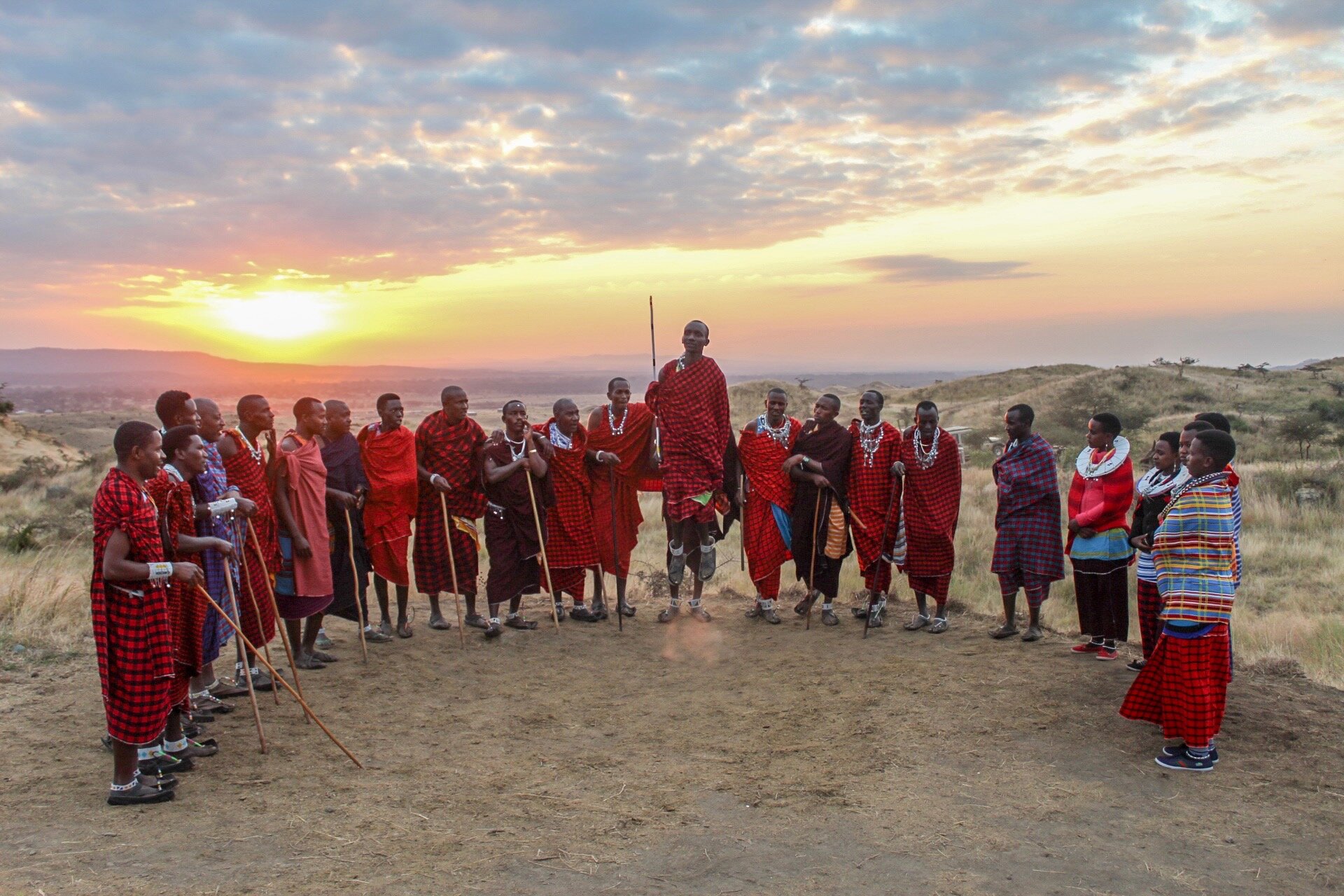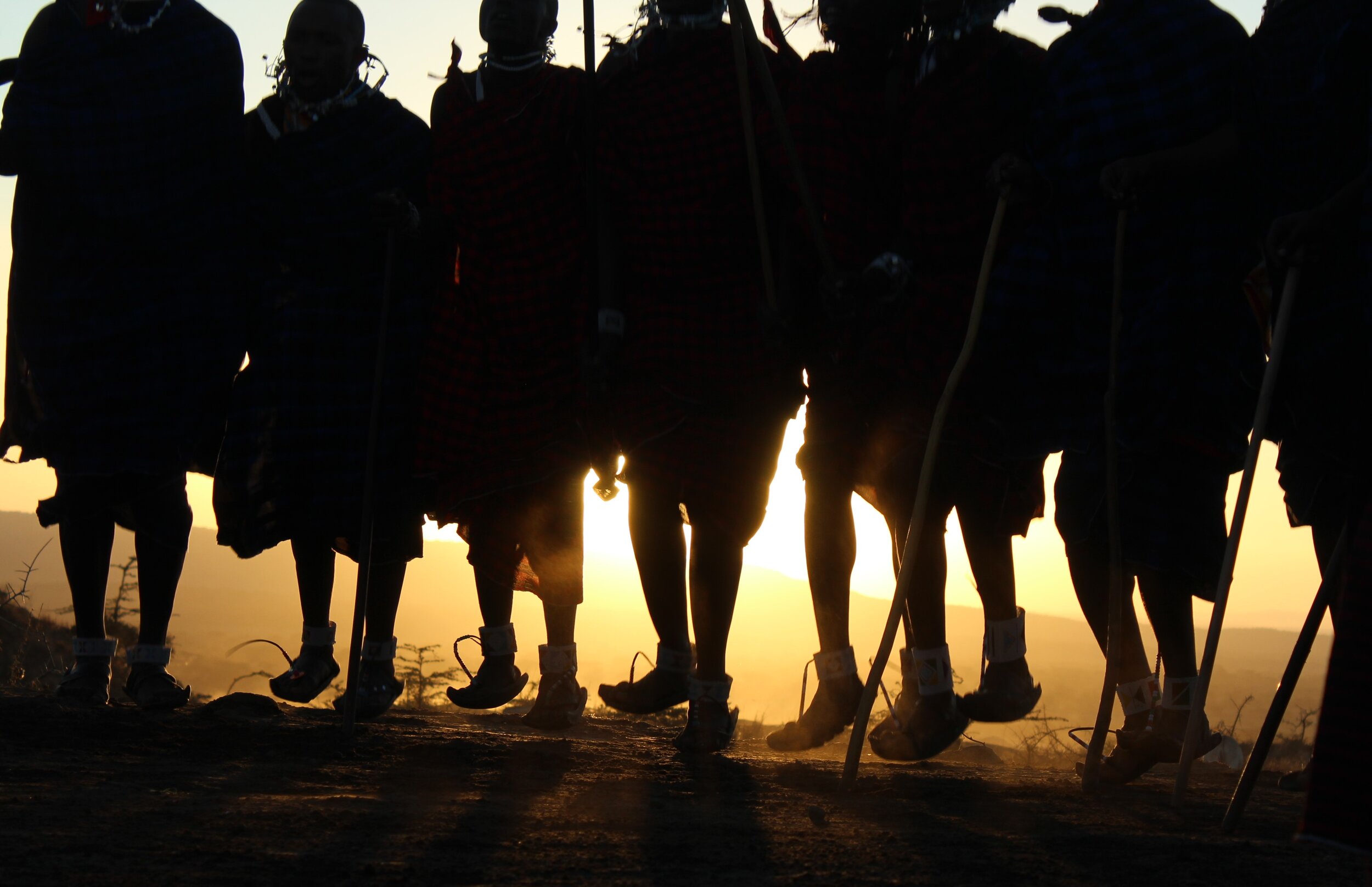A Spotlight on the Maasai Tribe
Widely known for their fearsome reputation as warriors and cattle rustlers, the Maasai are an indigenous ethnic group in Africa of semi-nomadic people inhabiting northern Tanzania and Kenya. Due to their distinct traditions, regalia and culture, and the proximity of their residence to many East African national parks, the Maasai are among the most well-known tribes in the world. Maa, the language the Maasai people speak, is a member of the Nilo-Saharan family. Many Maasai also speak the official languages of Tanzania and Kenya - Kiswahili and English. Here’s a brief spotlight on the Maasai Tribe in Tanzania.
HISTORY
According to the Maasai oral tradition, they originated from the lower Nile Valley north of Lake Turkana (Northwest Kenya) and migrated south around the 15th century arriving in a vast land stretching from northern Kenya to Tanzania between the 17th and 18th century.
The Maasai and the larger Nilotic group they were part of, raised cattle as far east as the Tonga Coast in Tanganyika (now mainland Tanzania). The Maasai raided using spears and shield but were feared most for throwing clubs (orinka) which could be thrown accurately from up to approximately 100m.
Beginning with a treaty in 1904 followed by another in 1911, Maasai lands in Kenya were reduced by 60% when they were forcibly evicted by the British to make room for settler ranches. In Tanzania, the Maasai were displaced from their fertile lands between Mt Meru and Mt Kilimanjaro, and most of the fertile highlands near Ngorongoro in 1940.
More lands were taken from the Maasai to create wildlife reserves and national parks including Nairobi National Park, Masai Mara Game Reserve, Samburu National Reserve, Lake Nakuru National Park and Tsavo National Park in Kenya and Ngorongoro Conservation Area, Tarangire National Park, Lake Manyara, and Serengeti National Park in Tanzania.
CULTURE
The Maasai society is strongly patriarchal and a body of oral laws guide many aspects of behavior. They are monotheistic, they worship a single deity called Enkai. Enkai is dual in nature, Enkai Na-nyokie (red god) is vengeful in nature, while Enkai Narok (black god) is benevolent.
The traditional Maasai lifestyle centers around their cattle which makes up their primary source of food, and a man's wealth is measured by the amount of children and cattle he has. The Maasai believe that God gave them all the cattle on earth which leads to the belief that cattle rustling from other tribes is a matter of taking back what rightfully belongs to them. While the Maasai's way of life depends on their cattle, they have also grown dependent on foods such as sorghum, rice, potatoes, and cabbage.
TRADITION AND CUSTOMS
The rites and traditions of the Maasai tribe are taken seriously, and on special occasions and ceremonies, bulls, goats, and lambs are slaughtered. Sometimes, you can see the Maasai men in a trance-like state jumping excitedly in uniform motion in one spot. Elders play an important role in the community and society at large, with elderly men sometimes joined by retired elders to decide major matters for each Maasai group.
The Maasai tribe believes that drinking cow’s blood is a great way to make the body warmer and stronger. They dwell in small hut settlements of 8 - 15 huts per village and their boma (hut) is surrounded by a thorn bush fence that acts like a barbed-wire protecting the tribe and cattle from predators and other tribes.
On many occasions, the Tanzanian government has tried to introduce programs aimed at encouraging the Maasai people to relinquish their traditional semi-nomadic lifestyle, but they have held firm to their age-old customs, though modernization is gradually seeping in. Nowadays, many of them welcome visits to their villages to experience their traditions, culture, and lifestyle.
If you want to experience firsthand the way of life of a true Maasai or get to know them at a deeper level, we encourage you to include a visit to African Amini Maasai Lodge in your safari itinerary. The lodge is completely run by Maasai and is upgraded to western standards while giving you the opportunity to get a glimpse of the life of the Maasai. Here, you can learn even more about their way of life while sitting around a bonfire, go on nature walks with them and even visit a few social projects.










